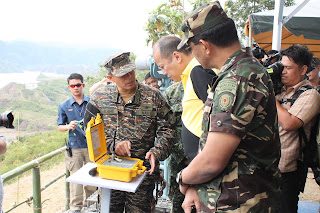HANOI, Vietnam, March 6, 2011-During the 2nd National Forum on DRR and CCA at the Sheraton Hotel, Ha Noi, Senator Loren Legarda, the UNISDR Regional Champion for Disaster Risk Reduction (DRR) and Climate Change Adaptation (CCA) for Asia and the Pacific, yesterday pushed the urgent passage of a disaster risk reduction and management law in Vietnam.
Legarda said that for more effective and sustainable DRR and CCA programs like the Philippines, Vietnam has compelling reasons to develop an enabling institution, law, and policy environment and yet accomplishing these required a concerted effort of key stakeholders and the unrelenting commitment of leaders to bring about needed change.
The common concern of the two (2) countries are the extreme weather events, stronger typhoons, heavier rains, more severe floods, and devastating droughts have become recurring events, adding that the Philippines regularly exports some of its typhoons to Viet Nam and that the weather events in Manila serve as effective early warnings for Hanoi.
“Vietnam’s disaster risk management legislation is pending in the Parliament, Legarda said, noting that the two new Philippine laws that she had shared with them are a product of passion and perseverance where she hopes that the legislature of Vietnam would find them useful.
“The 2009 Philippine Climate Change Acts provides that the strategic framework for a comprehensive program and action on climate change at national and local levels while the 2010 Philippine Disaster Risk Reduction and Management Act strengthens the country’s institutional mechanisms for disaster risk reduction and management and lends great importance to disaster prevention and mitigation,” she furthered, saying that the ministries of Vietnam may consider taking the same path to effectively build resilience to disasters like the Philippines.
Legarda concluded that in order to succeed to reduce disaster and climate risks building linkages and promotion of common understanding and cooperation among stakeholders are ways of consolidating forces, expertise and resources, whereas our country resorted to these ways when the National Disaster Risk Reduction and Management Council and the Commission on Climate Change entered into a Memorandum of Agreement to do certain initiatives together. (Jason de Asis)







